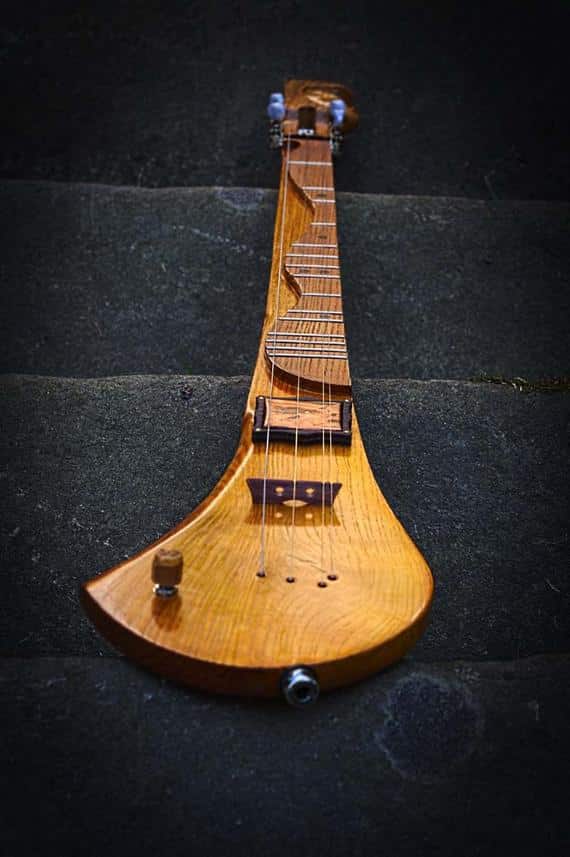Electric instruments are all the rage these days, and the same is true for the electric dulcimer. As a modified variant of the generic Appalachian dulcimer, electric dulcimers are becoming increasingly popular.
What are Dulcimers?
Dulcimers are stringed instruments, originally created as a simpler alternative to the violin and other more complex instruments. Information regarding the history of the dulcimer as an instrument is generally limited, unfortunately.
However, most people generally assume that early American settlers created the first examples around the 18th century. During this time, early American settlers lacked time and specialist skills to make more complicated and elaborate instruments.
The dulcimer itself is a stringed instrument in the same family as the zither. It’s a large instrument but has a simple shape and design. It is recognizable for its fretted strings, meaning that the strings are elevated away from the main body and neck of the instrument.
What is an Electric Dulcimer?

Numerous traditional stringed instruments have versions, and the same is true for the dulcimer. The vast majority of electric dulcimers are variants of the Appalachian dulcimer, which is the generic model mentioned when one talks of dulcimers. However, some electric versions of the hammered dulcimer are also available. They work in a similar manner to an electric guitar in that the electric pickup allows for a more amplified sound.
Dulcimer Materials
The dulcimer is primarily made from wood, which is something of a nod back to the origins of the Appalachian dulcimer. Traditionally, dulcimer makers used locally sourced wood in the construction of the dulcimer.
In keeping with this tradition, most modern dulcimer makers still use American native woods in the construction of their dulcimers. This includes walnut, oak, cherry, and apple wood. However, some modern-day dulcimer manufacturers use plastic, which is blasphemy. These instruments produce sound that is no where near that that of traditional wood dulcimers.
Spruce or cedar is often used for the soundbox, although this can vary by manufacturer. Meanwhile, for the body of the instrument, most makers will use a variety of hard wood such as mahogany or rosewood.
How Many Strings?
Standard and electric dulcimers typically have three strings; however, they can have anywhere up to six strings. Above three strings, additional strings are doubled up. For example, a four-string dulcimer will have two single strings and a double string. A five-string dulcimer will have two double strings and a single. And a six-string dulcimer will have three double strings and no single strings.
When Was the Electric Dulcimer Invented?
It isn’t entirely clear when the first electric dulcimer was created. But one of the most common variants of electric dulcimer is the DulciCaster. The DulciCaster was invented by Quintin Stephens, a second-generation dulcimer enthusiast, who began building his variant of electric dulcimers in Summer 2017.
Final Thoughts
The dulcimer is essentially a simpler version of the violin. It was invented around the 18th century by American settlers, who lacked the skills and tools to make more complex instruments. Numerous variations of the basic mountain or Appalachian dulcimer exist, and the electric dulcimer is just one such optional variant.
The most common electric dulcimer, the DulciCaster, was invented by Quintin Stephens. And thanks to the amplification, it produces a superior acoustic than the standard dulcimer.




